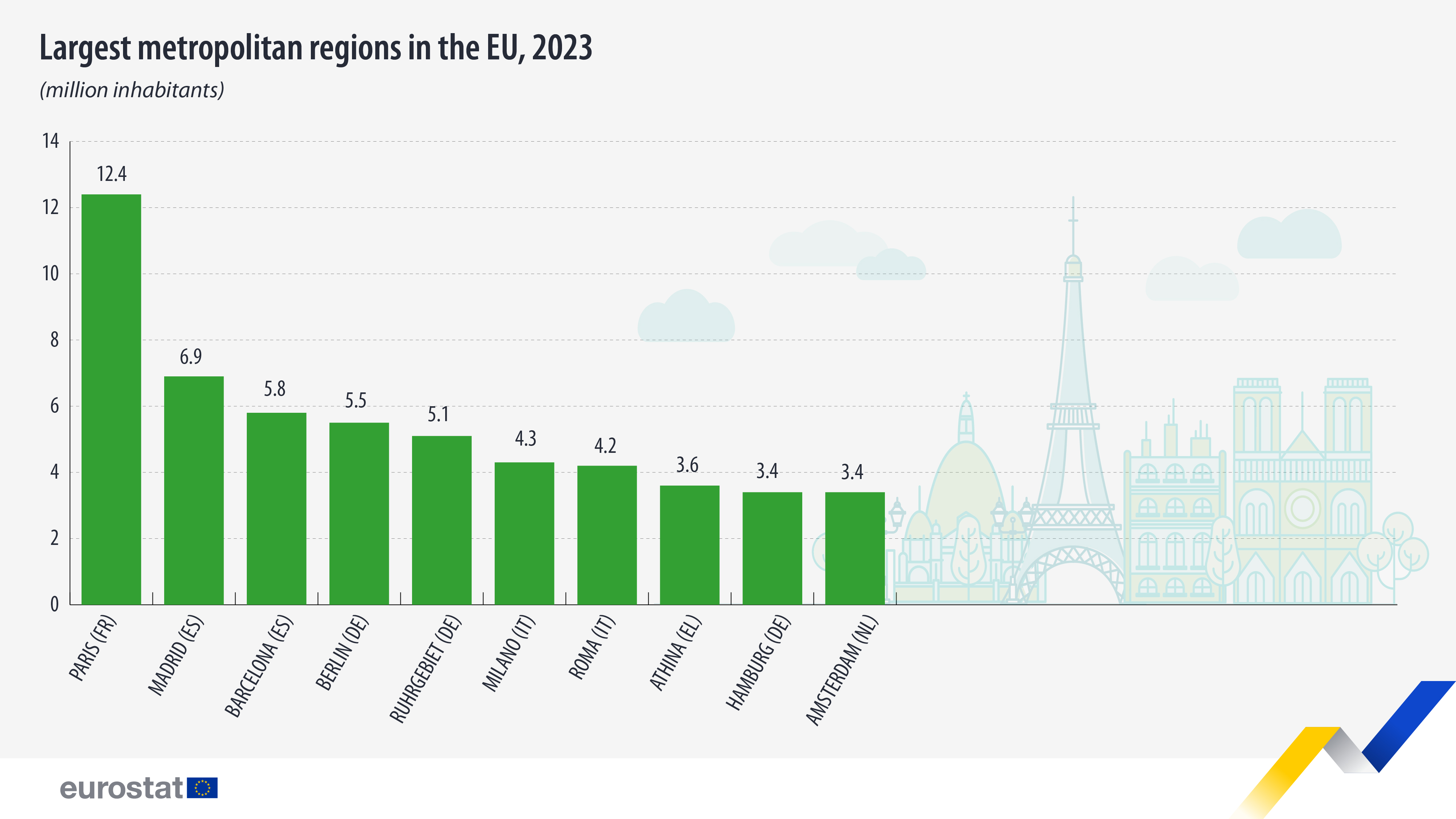Where are the largest metropolitan regions in the EU?

In 2023, there were 5 metropolitan regions in the EU with over 5 million people.
The EU's largest metropolitan region in 2023 was Paris in France, with a population of 12.4 million people, followed by the Spanish metropolitan regions of Madrid and Barcelona with 6.9 and 5.8 million inhabitants, respectively. Berlin, with a total population of 5.5 million, and the Ruhrgebiet metropolitan region in Germany (5.1 million residents), completed the top 5.
Source dataset: met_pjanaggr3
Over the last 5 years (from 2018 to 2023), the most significant population growth was observed in Madrid (+322 000), Barcelona (+282 000), and Berlin (+222 000).
Among the top 10 largest metropolitan regions, Barcelona, Madrid, and Amsterdam experienced the highest relative growth rates, with their populations expanding by 5%. On the other hand, the Italian capital region of Rome was the only metropolitan region that experienced a noticeable population decline compared with 2018 (-129 000), while Milan's population remained relatively stable (-6 000).
This article marks the start of the 10th European Summit of Regions and Cities taking place on 18 and 19 March 2024 in Mons, Belgium.
For more information
- Statistics Explained article on urban-rural Europe - demographic developments in cities
- Eurostat regional yearbook 2023 edition
- Thematic section on regions and cities
- Database on metropolitan regions
Methodological notes
- The metropolitan typology is applied at the level of nomenclature of territorial units for statistics (NUTS) level 3 regions and identifies metropolitan regions in the European Union (EU). These regions are defined as urban agglomerations (NUTS level 3 regions or groups of NUTS level 3 regions) where at least 50 % of the population lives inside a functional urban area (FUA) that is composed of at least 250 000 inhabitants.
- Paris, 2023: provisional data.
If you have any queries, please visit our contact us page.

